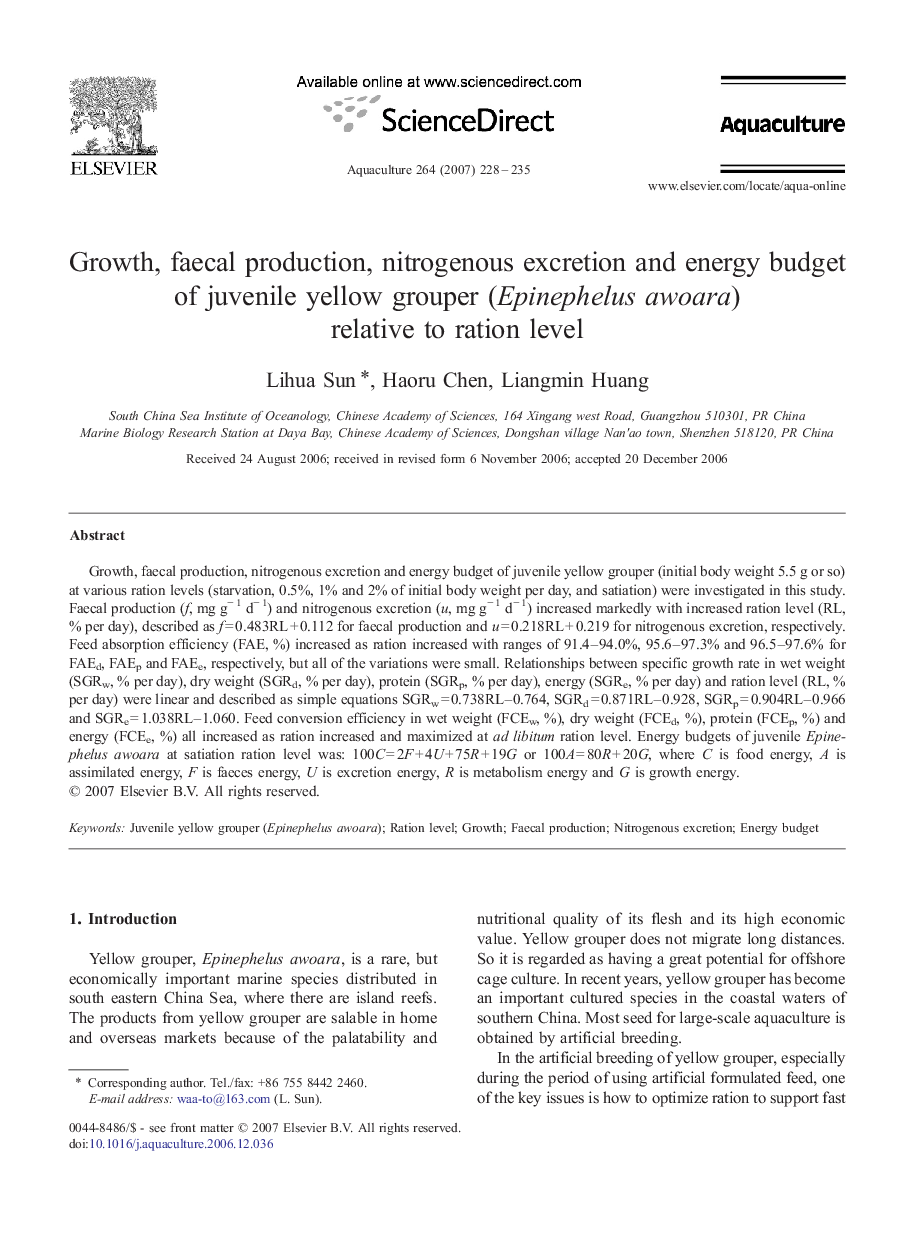| Article ID | Journal | Published Year | Pages | File Type |
|---|---|---|---|---|
| 2425381 | Aquaculture | 2007 | 8 Pages |
Growth, faecal production, nitrogenous excretion and energy budget of juvenile yellow grouper (initial body weight 5.5 g or so) at various ration levels (starvation, 0.5%, 1% and 2% of initial body weight per day, and satiation) were investigated in this study. Faecal production (f, mg g− 1 d− 1) and nitrogenous excretion (u, mg g− 1 d− 1) increased markedly with increased ration level (RL, % per day), described as f = 0.483RL + 0.112 for faecal production and u = 0.218RL + 0.219 for nitrogenous excretion, respectively. Feed absorption efficiency (FAE, %) increased as ration increased with ranges of 91.4–94.0%, 95.6–97.3% and 96.5–97.6% for FAEd, FAEp and FAEe, respectively, but all of the variations were small. Relationships between specific growth rate in wet weight (SGRw, % per day), dry weight (SGRd, % per day), protein (SGRp, % per day), energy (SGRe, % per day) and ration level (RL, % per day) were linear and described as simple equations SGRw = 0.738RL–0.764, SGRd = 0.871RL–0.928, SGRp = 0.904RL–0.966 and SGRe = 1.038RL–1.060. Feed conversion efficiency in wet weight (FCEw, %), dry weight (FCEd, %), protein (FCEp, %) and energy (FCEe, %) all increased as ration increased and maximized at ad libitum ration level. Energy budgets of juvenile Epinephelus awoara at satiation ration level was: 100C = 2F + 4U + 75R + 19G or 100A = 80R + 20G, where C is food energy, A is assimilated energy, F is faeces energy, U is excretion energy, R is metabolism energy and G is growth energy.
